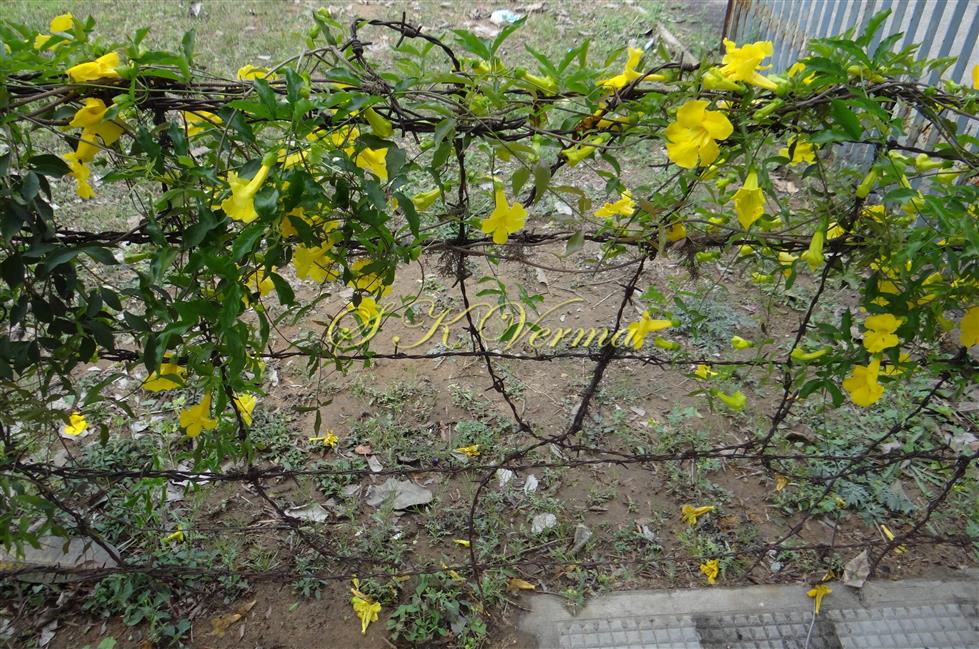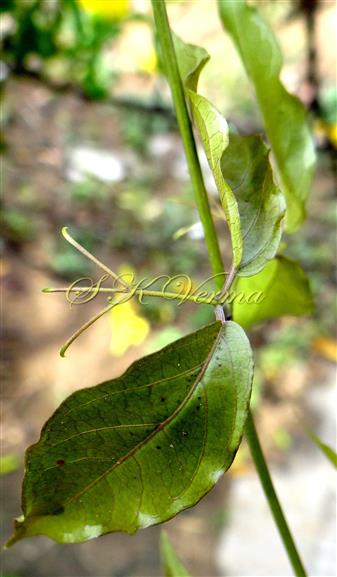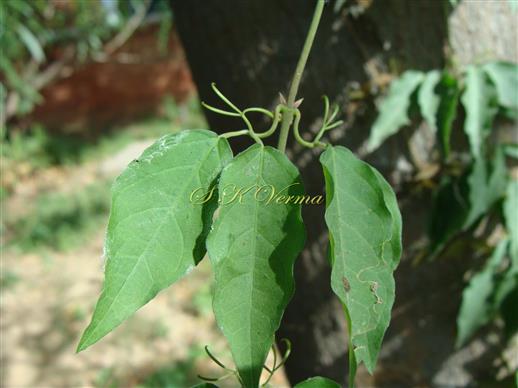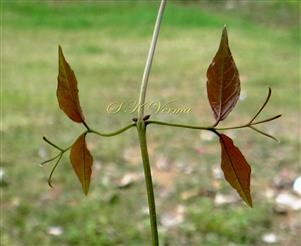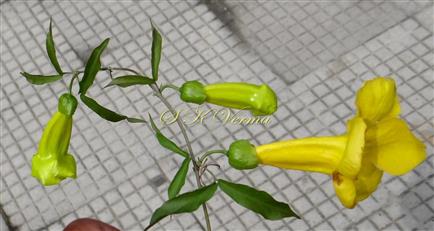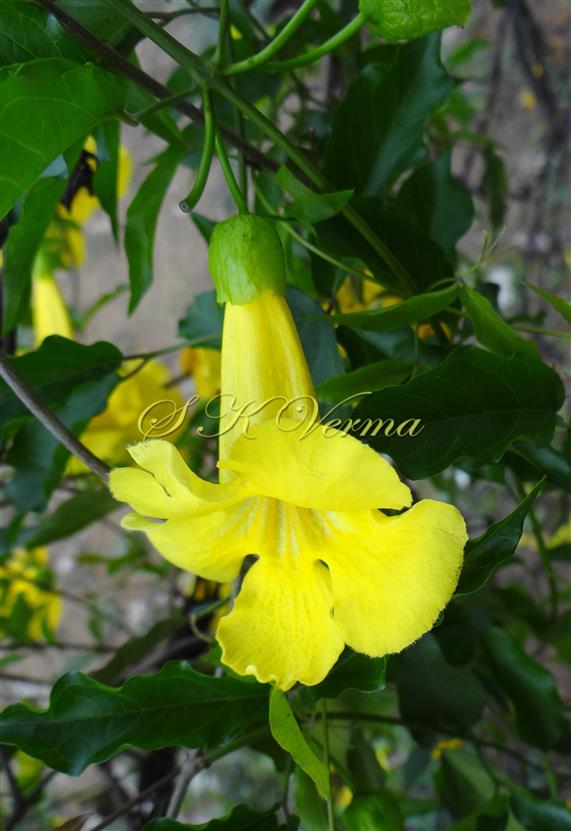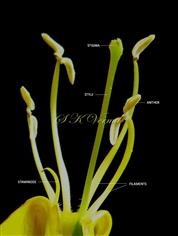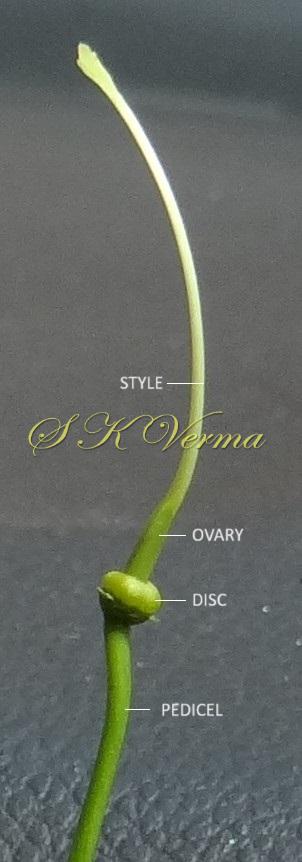DOLICHANDRA
Dolichandra
Cham., Linnaea 7: 757. 1832; Fonseca et al., Phytokeys 46: 35-43. 2015.
Lianas, with dimorphic juvenile growth, juvenile phase-small leaved forms, reproductive phase-spreading and pendulous, without strong odour. Stems with multiple dissected phloem wedges in C.S., pith solid; branchlets cylindrical (tetragonal), glabrous, with or without lenticels, with or without interpetiolar glands, with or without discontinuous interpetiolar ridge, with epidermis not peeling. Prophylls of axillary buds subulate, without glands. Leaves 2- or 3-foliate, terminal leaflet often replaced by a trifid tendril, tendril without adhesive discs, with uncinate apices; leaflets coriaceous, with glands sparsely distributed over lamina, without pellucid punctations, without domatia, petiolules not articulated; petiole cylindrical, never modified into tendril, not articulated. Inflorescence axillary, a congested cyme or thyrse (umbellate group of cymes). Flowers bisexual, zygomorphic, pentamerous, yellow or red. Calyx cupulate and irregularly lobed or spathaceous, membranous, glabrous to puberulent externally, without glands. Corolla yellow or red, without nectar guides, tubular or funnelform, tube straight, membranous, glabrous externally, without glands, lobes 5, imbricate. Stamens 4, with well-developed filaments, included or exserted, anthers glabrous, thecae straight. Carpels 2, syncarpous; ovary sessile, smooth and glabrous to puberulous externally, ovules in multiple series on each placenta, placentation axile; stigma rhombic, glabrous. Disc annular and lobed. Capsules linear (elliptic), flattened or inflated, straight, coriaceous, with valves 2 and partially divided longitudinally or 4, glabrous, with or without lenticels, without glands, without wings, smooth, with calyx persistent; seeds winged, with body smooth and glabrous, wings hyaline, linear.
9 species
Dolichandra unguis-cati
Dolichandra unguis-cati
(L.) Lohmann in O. Hokche, P.E. Berry & O. Huber (eds.), Nuevo Cat. Fl. Vasc. Venezuela 273. 2008; Bignonia unguis-cati L., Sp. Pl. 2: 623. 1753; Doxantha unguis-cati (L.) Miers, Proc. Roy. Hort. Soc. London 3: 189. 1863, as “unguis”; Macfadyena unguis-cati (L.) Gentry, Brittonia 25(3): 236. 1973.
Scrambling shrub or woody vine. Stem strong, flexible, cylindrical, brown with many lenticels. Prophylls of axillary buds subulate, without glands. Leaves opposite; trifoliate with 2 lateral foliar leaflets and terminal leaflet modified into tripartite uncinate tendril; lateral leaflets ca. 5 cm x 1.5 cm, lanceolate or ovate-lanceolate, acuminate, base rounded, symmetric or slightly asymmetric, entire, dark green above, lighter below, membranaceous. Inflorescence 1-3-flowered axillary cyme. Flowers bisexual, zygomorphic, pentamerous, hypogynous, ca. 7 cm long and ca. 6.5 cm across, fragrant; pedicels ca. 2 cm long. Calyx ca. 1 cm long, cupulate, truncate to sinuous without an apicule, mambranous, lobes inconspicuous, green, glabrous. Corolla ca. 7 cm long, yellow, tubular-funnelform, tube 4-5 cm long; narrow at base, flared upwards, ca. 4 cm in diameter at throat, limb 2-lipped, upper lip of 2 lobes and lower of 3 lobes, two upper lobes 1.6-1.8 cm long and 3-3.2 cm broad, reflexed, may be further lobed; lower three lobes 2 cm x 2 cm, obtuse, margin hairy. Stamens 4, inserted in corolla tube, included, didynamous, larger stamens with ca. 2.3 cm long filaments and shorter stamens with ca. 1.5 cm long filaments, pubescent at base near attachment; anthers 1 cm long, thecae divaricate, pale white or pale yellow; one staminode ca. 1 cm long. Ovary ca. 5 mm long, style 2.5 cm long, stigma bifid, lobes flattened, rhombic-ovate; fleshy disc below the ovary.
Capsule ca. 25 cm x 1-1.5 cm; seeds winged, wings hyaline, membranous.(Fruits not observed)
Common Names: Cat’s claw creeper, Cat’s claw trumpet, Cat’s Claw, Funnel creeper
